Homeowners have several distinct advantages when it comes to prepping. Owning your own place means that you can do what you want with it. You don’t have to get permission from the landlord. Then, the changes that you make are yours. Whether they increase the property value or not, you aren’t going to lose them next year when you move.
Homeowners also have room to work with, even those with a small backyard. Apartment dwellers have to try and prepare, without that space.
So, what are you doing with all that space you have? Has it become part of your efforts towards self-sufficiency, perhaps in turning your home into a homestead; or is your backyard no different than any of your neighbors? Granted, we don’t want to be too obvious about what we’re doing, but there are ways of explaining away most projects we would undertake.
As a homeowner myself, I’ve enjoyed the opportunity to make use of the large backyard I have.
While I can’t come anywhere near being able to claim that I’ve turned it into a homestead, give me enough time and that might just happen. At least… I’ve got plans for the project which will make it that way.
In the meantime, here are some projects that I’ve done or am planning on doing. Perhaps you might like to do some of them yourself, and join me on the way to becoming more prepared.
Related: 31 Cool DIY Projects for Preppers
Set up Rainwater Catchment
Perhaps one of the easiest prepper projects you can do on your property is to install rainwater catchment. If you already have gutters on your home, then all you need to do is build stands for rain barrels and redirect your downspouts into them. Depending on the size of your roof and how much rain you receive where you live, you could harvest enough rainwater to take care of all your survival water needs.
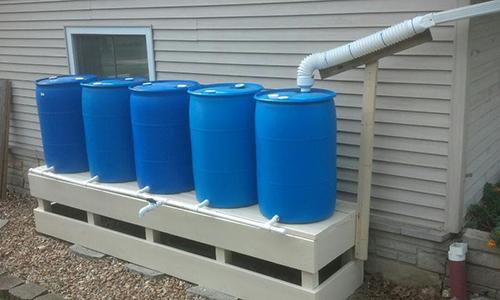
Of course, if you don’t already have gutters on your home, you’re going to have to add them. But that’s really not all that hard to do, especially if you have a one-story home. Your local home improvement center sells preformed sections of gutter, with splices to put them together. I’d highly recommend spending the extra money for the leaf catchers, to help keep your gutters free of dead leaves and the bacteria that will break them down.
One key in maximizing the effectiveness of your rainwater catchment system is to use multiple barrels in for each downspout, increasing your water retention capability. There are several ways of doing this, all of which involve plumbing the barrels together.
Related: Is Harvesting Rain Water Illegal in Your State?
Start Gardening
If you don’t already have a vegetable garden and have enough land to grow one, why don’t you? Gardening is a great way to augment your grocery purchase, as well as prepare for a long-term disaster. Should we ever be faced with something that shuts down the grid or our supply chain in general, being able to grow your own food will be essential.
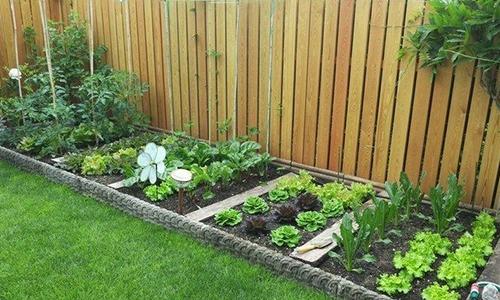
Two things about that: it takes time to learn how to garden effectively. There’s more to it than just scattering some seed and watering it every once in a while. You need to know how to get the most out of your garden and how to deal with problems that will arise.
The other thing is that you’re going to need a much bigger garden to survive, than what most people think. Forget about the idea of the four-foot garden, you want something more like the 1,200-foot garden. You’ve probably seen articles about people who grew their own food; in every case, they converted their entire backyard into a garden to do so.
Related: How To Make A Keyhole Garden
Let’s get Some Fruit Trees in There
One thing that surprises me in the prepping community is how few people bother to plant fruit trees. We all talk about growing vegetables, but we don’t talk about growing fruit. Yet fruit trees require much less maintenance than a vegetable garden does, and once grown they provide a considerable amount of food.
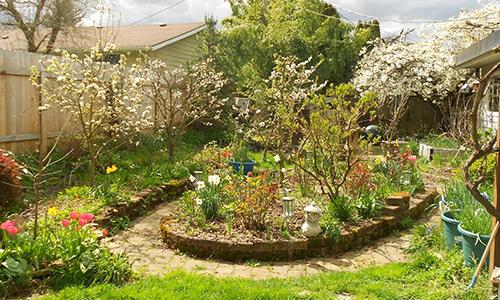
I’ve got over a dozen fruit trees in my backyard, almost all of which we’ve planted since buying the home.
Between them, I get several wheelbarrows worth of fruit each year, saving me having to buy that fruit. While not all that much by the standards of fruit trees, as they grow larger, I’ll get even more.
Related: How To Plant Your Orchard To Have Fruits All Year Round
You Should be Composting
If you’re gardening at all, then you should have a compost heap or bin as well. Having had a composting bin for a couple of years now, I’d recommend putting it on the back edge of your lot, far from anyone’s home. I started out with mine right next to my garden, for convenience. That was a big mistake.
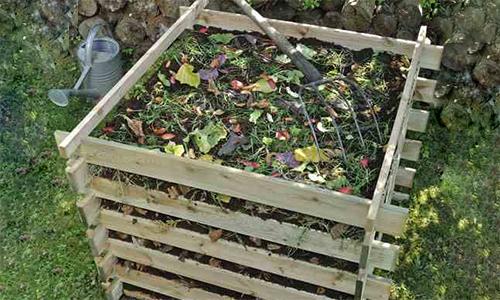
Composting provides an ongoing source of natural fertilizer for your garden, helping increase the size of your harvests. It also gives you something to do with all those tables and kitchen scraps, besides throwing them in the trash.
Related: 39 Items You Can Compost
Build a Chicken Coop
Vegetable gardens are great, but they don’t do much for providing animal protein. For that, you’re going to need some sort of animal. The question is… what can you raise where you live?
Many communities allow you to raise fowl, limiting you as to how many you can raise. With that being the case, it makes more sense to raise chickens for eggs, than to raise them to eat.
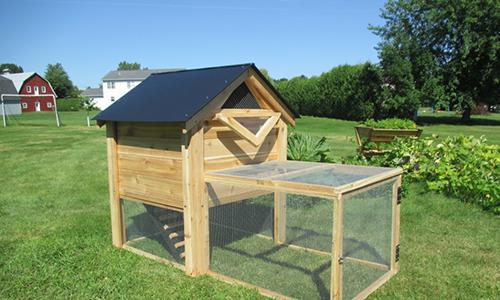
You’ll get more animal protein out of six layers giving you an average of four eggs per day than you will out of raising six fryers, which need to grow for a minimum of six weeks, before they reach a minimum size for cooking.
The other advantage of those layers is that they will produce eggs for a number of years. But they’ll need to be six months old, before they give you their first eggs. So you’ll want to start early, not waiting until the disaster strikes.
Related: The Prepper’s Guide For Raising Chickens
Dig a Pond and Raise Fish
Another good source of animal protein is fish. Many nutritionists will even tell you that it’s healthier to eat. By and large, fish are easier to grow than most animals, especially if you raise something like tilapia, which doesn’t require a whole lot of room.
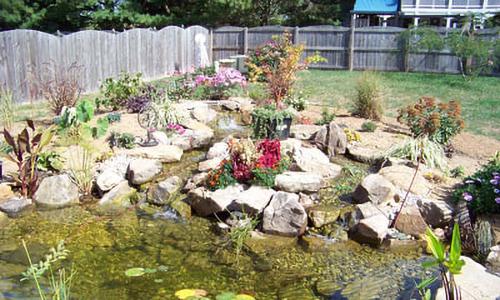
Making a pond is actually much easier than you might imagine. The trick is to start out with a plastic pond liner, essentially a thick piece of plastic sheeting. That solves the whole problem of making your pond waterproof, simplifying the job considerably.
With that, all you have to do is dig the hole, put in the water circulating system, and install the liner, weighting it down around the edges. Your water circulating system will filter the water and aerate it, just like in an aquarium.
The other problem you’ll have to deal with is feeding the fish. While you can buy commercial food for them, an easier solution is to start a worm farm. Buy 10,000 worms and put them in a big plastic bin with plenty of compost to eat. Then all you’ve got to do is grab a handful, any time you need to feed your fish.
Related: How To Make A Year-Round Self-Sustaining Garden
Add a Vehicle Gate in Your Fence
If your backyard fence doesn’t already have it, I’d highly recommend adding a vehicle gate beside your home. This is a simple project that you can complete in one day. While not a necessity in normal times, it will give you the ability to move your cars into the backyard in a time of crisis. If your garage is as full as mine is, that’s the only way you’re going to hide your cars from marauding gangs in a time of social unrest.
Related: What Is the the Right Fence for Your Homestead?
Plant a Hedge for Self-defense
As I was just referring to, your backyard probably has a fence around it. Most yards today do. Hopefully you’ve got a privacy fence, if not something better. Your neighbors don’t need an open window into what you’re doing. But if you’re like most people, your front yard doesn’t have a fence.
Although most people don’t like having a fence around their front yard, it’s a great way of increasing your home’s security. But not just any fence will do. It needs to be something that people can’t just jump over so that it controls how people gain access to your property. The idea isn’t so much to keep them out altogether but to have them come onto your property by controlled access. This allows you time to see them and to mount a defense, if necessary.
Few fences will do this, at least a few that aren’t so obvious as to make your home look like a protected government installation. However, a good hedge, grown from a plant that has thorns and with the branches interwoven, will ensure that nobody can get through in any way, except for your front gate. Grow it up to about four feet in height and three feet thick and you’ve got a great barrier.
Related: 10 Home Security Secrets from Venezuela
Use Vines to Help Keep Your Home Cooler
We talk a lot about heating our homes, in the event of a grid-down situation, but you hardly hear anyone talk about keeping your home cool. That may not be important to people living in the northern part of the country, but for those who live in the south, cooling is important.
The shade is an important part of keeping cool, without using electricity. People who live in hot climates appreciate the value of shade. But your home itself really isn’t shade, as the sunlight striking it tends to warm it up inside. So what can you do?
If you happen to have shade trees, you’re fortunate, especially if they’re planted on the south side of your home. But it can take years to grow trees tall enough to use them for shade. Vines grow much faster and can be grown to help keep the sun from striking the walls of your home. While not a perfect solution, it can help.
The trick here is to build a trellis that’s set out away from the house far enough so that air can pass between the trellis and the home. A foot or so is usually enough. One way to do this is to anchor a pressure-treated 4”x 4” at ground level and use a heavy fishing line to weave a diagonal diamond pattern between there and the eaves of the home. This will provide an inexpensive trellis for vines to grow on, that’s not intrusive in its own right. Pick a type of vine that has twisting tendrils, as they will hold well to the fishing line.
Related: 13 Ways To Keep Your House Cool In The Summer
Grab the Shovel and Build a Root Cellar
With all the food you’re going to be growing, you’re going to need a lot of storage space; preferably storage space that doesn’t require electricity. Our ancestors solved this problem long ago, by digging root cellars behind their homes. A root cellar is a belowground room, used primarily for storing root vegetables. They will usually hold a temperature of 55°F.
The best way to build a root cellar is to dig a big enough hole that you can make an actual room, whether from cement blocks or earthbags. You’ll need some sort of staircase to get down into it, as well as a pump to remove any water so your root cellar can’t flood.
If you don’t have the time or inclination to make such a structure, then you might want to consider burying an old refrigerator on its back, with the doors at ground level. That will work as a smaller root cellar, especially if you have it in the shade so that the sun doesn’t shine on it.
You may also like:
Easy to Build Root Cellar in Your Own Back Yard (Video)
The Best States to Outlive an Economic Depression
How To Make A Mini Root Cellar In Your Backyard In Less Than Two Hours

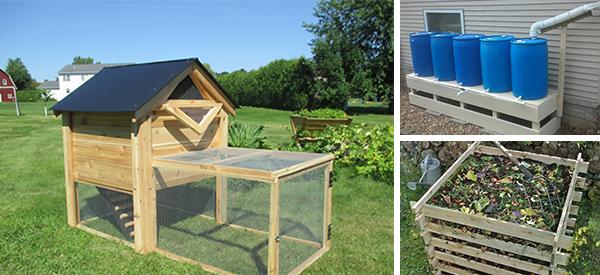
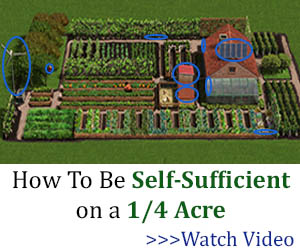








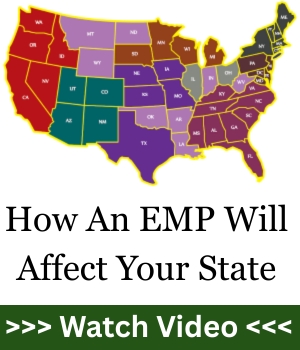
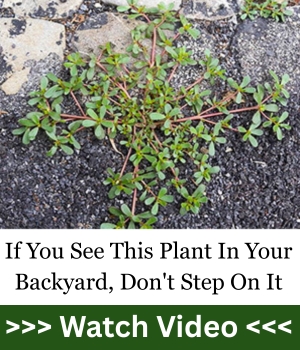
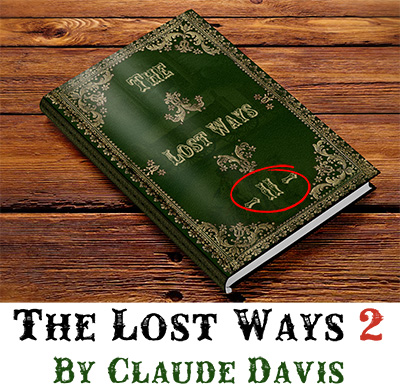
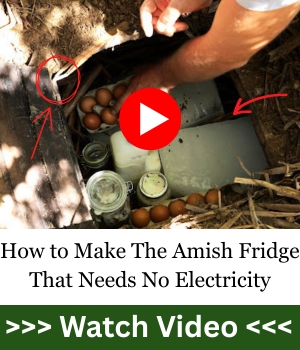
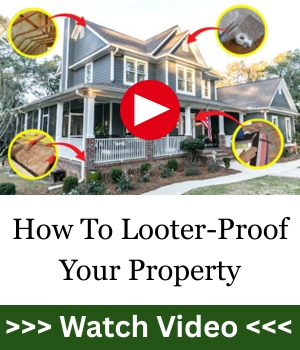
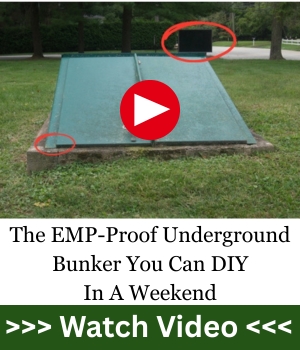
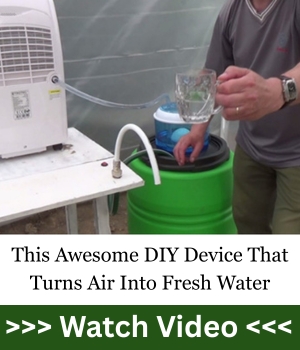
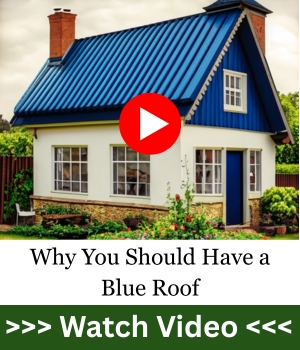




This article is very informative. Even if only one thing was done it would be a great step in the right direction. Even though we are elderly we can these things. Thank you so much. I always enjoy your emails.
Having built a fish pond from scratch many years ago, there is more to it than a hole in the ground that doesn’t leak water. A fish pond has definite criteria that extend well beyond 4 paragraphs in a general article.
My advice, having been there and having screwed that up, is to get a Sunset Magazine book or some other do-it-yourself book on how to build a sustaining pond with an appropriate filtering system and sufficient protections against predators. Talk to some folks who actually have fish ponds before you embark on a fairly technical building project.
How do you plan to filter the fish pond if there is no electricity?
What are the natural predators for your fish pond in your area?
How do you protect your fish from those predators?
If you have a natural waterway on your property, can you create a pond using that natural waterway? Are there local, state and federal regulations that may come into play?
A fish pond in the open presents a lot more problems than a fish tank in your den, talk to folks who have been there and done that in your area before you spend a lot of effort on a fish pond.
We raised ornamental koi for more than 30 years, so I have been down that road and learned a lot from the University of Hard Knocks.
Oh, and by the way, fish get sick too. You have to recognize what their illness is and how to treat it, otherwise you again are rewarded with dead fish. So in addition to building the pond, you need to educate yourself on the illnesses that typically affect your particular brand of fish.
You also need to check to see what kinds of fish you can legally raise. There are restrictions against some invasive species, especially if you are going to use natural waterways where they might escape.
If your area is subject to flooding, those Asian carp that are so prolific just might escape into natural waterways and eradicate all the other native fish.
It’s not as simple as a leak proof hole in the ground with some kind of filtering system.
We bought a house in OR that had a koi pond. The prior owner had built it under a tree so the water would get tannic and required a big clean out every year. When we decided enough was enough we found that because koi were non-native we couldn’t even give them to a nearby winery that had a small lake because lakes have underground artesian wells that connect into rivers. Gave the koi away to a place that sold pond supplies. So 1. Locate fish pond clear of trees. Can always have some overhanging shale at edges or water plants to provide shade for fish.
2. Ideally, you could go big with one of those systems that integrate a fish pond with a garden with fish droppings providing fertilizer.
3. Federal govt has or at least had programs to populate rural ponds with free fish so check that out.
Good luck.
Great comments left coast chuck. It also might be worth looking into an aqua ponicks project if you have room. this will cover multiple things for your survival. Fresh food and fish can be harvested from these items.
left coast chuck is completely right, there’s more to building a pond than the simplified approach described here. But other than that, this is a fantastic article on checking out simplified approaches (by asking the appropriate questions about your area) to important criteria…
LCC, for info on ponds. large, small & miniature go here: https://www.pondboss.com/Home
Altho they primarily focus on larger ponds they do have info on the miniatures.
You can go on their forum & ask questions. These guys are great & very willing to help. I highly recommend!
I did just that when I built my 2.5 ac pond. Saved me a lot of headaches!
RK: Thanks for the reference. I am sure some of the folks following this list will greatly appreciate it. Here on the southern left coast, a 2.5 acre body of water isn’t a pond, it is a blooming lake.
I subscribed to Koi magazine while I was enjoying their colors and habits. I have seen some “ponds” that were architectural wonders where the fish got to swim into the house and back out. I am confident that “koi pond” cost more than my whole house.
At this point in my life I am not going to start back into aquaculture. I am more pondering the different ways to fill in the hole in my back yard so that it won’t look like there was a hole in my back yard that leaves prospective buyers wondering if they are going to have trouble with the local fuzz about all the bodies that might be buried there.
I merely wanted to forewarn readers that a fish pond entailed a tad more than a leak-proof hole in the ground with a filter system from Home Depot.
“Homeowners have several distinct advantages when it comes to prepping. Owning your own place means that you can do what you want with it. You don’t have to get permission from the landlord.”
Unless you live in HOA then you can’t do these things which is why I would never live in one!
Good info though.
If you are going to try to use an old refrigerator as a root cellar, that has its own technical issues. You need to remove the condenser coils and freon and all wiring. Then, you will need to plug the holes to keep insects and vermin (mice) out but you also need to ensure that you allow for air circulation. And, of course, please be sure to install a hasp and lock on the door so you don’t have a suffocation hazard in your back yard. And be aware of just how heavy a fridge door is when trying to open it upwards instead of sideways. It is not an easy maneuver, especially for an older person.
We used to camp with a group of friends, 2 weeks in tents without electricity. The group bought an old upright freezer with the “guts” removed, we put it in the kitchen tent, on its back and kept it stocked with block ice. It worked quite well as a community cooler, it was efficient at holding in the cold, but opening it and holding it open were often 2-man jobs, especially with an armload of ingredients or leftovers. Using one as a root cellar is going to present the same challenges.
We’ve lived in the same house 20 years and have the habit of taking a ‘Sunday Drive’ to see what sorts of projects the neighbors are up to. The houses are all on small acreage, 2-10 acres, outside of town, no HOA, and our County believes the best government is that which governs least so there are no rules other than that you can’t discharge a gun across a road or in the direction of a dwelling. Of course there is no fire protection and little law enforcement, which is popular with everyone but the insurance companies. Anyway, the most common projects this year are raised planting beds and chicken coops, neither of which will feed you in a long term SHTF event but gives you a sense of taking control after all the Covidia helplessness we’ve subjected ourselves to. Chickens are impractical because you have to feed them, which means when the feed store is gone you’re going to have to grow your own livestock feed. There are a couple breeds of good free range yard birds, but chicken is tasty and you are going to be feeding varmints instead of your children, my nearest neighbor fought a good fight against dogs, foxes,bobcats and coyotes but never installed an IADS and lost his flock to Sharpshinned and Cooper’s hawks. Actually a fella about a mile from here raises fighting cocks free range and has no problem with predators but can’t get ’em to lay eggs.
And a garden is a disaster waiting to happen, but I expanded mine this year, I’m worried about the economy this winter, instead of a garden for canning though I planted all Heritage plants to build me a good seed stock, just in case.
While I never had the problem, without a deep enough pond or some kind of shelter for the fish, birds of prey can be a real problem for your fish pond. I never had an egret wading around in my fish pond, but folks I knew of that didn’t make their pond deep enough to discourage that sort of activity, so they could view their beautiful (and expensive) koi would find egrets fishing in the pond with deleterious effect on the koi population.
I imagine a red-tailed hawk could have a similar effect on your free range chickens.
Already doing all but the chickens. We live in a village ten miles from the next town, but a few people complaining about roosters managed to get chickens outlawed. The village is surrounded by range land and brush. The number of predators is large, but needed to keep rodent populations down. Just to be ornery, I should buy a few dozen roosters and caponize them 🙂 niiop
My Uncle used a linoleum knife on the bull calves, is there a rooster attachment on your multi tool? Laura Esquivel gives a good account of castrating roosters in Como Agua Para Chocolate. Raising, prepping, and butchering stock is just plain hard work.
Living outside of town is great!
those old linoleum knives kept a razor edge. No, I need to send for the loop. Everything else is here. I need to get that movie. strange stuff 🙂
My grandmother taught me how-to on bull calves. Never let an old woman teach a kid that after she gets into a major fight with Pappy. ! niio
Once again you give me a good laugh at the end of the day. My Grandma and Grandpa slept at opposite ends of the house, I’d bet he kept track of the linoleum knife,too.
Great tips – these pics in here are so pretty!!!! In reality, it’s not that way. Real homesteads are functional, not pretty like Better Homes & Garden award winners. Once again, great info tho…